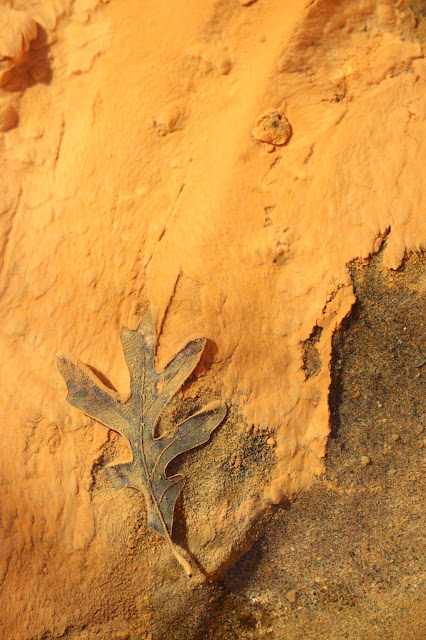When in Doubt, Keep it!
Back in 2012, when I was still just starting to understand fossils, my family and I went to Herkimer, NY to look for their famous "Herkimer diamonds, " double-terminus quartz crystals that occur in pockets in the incredibly hard dolomite matrix. We were after shiny things, but found a few other curiosities while we were there.
Along the creek at our campground, there were long, thin, shiny, black, rod-like impressions in dark, gray matrix. Years later, I found out they were graptolites, which are related to echinoderms (like sea urchins). However, not knowing what they were at the time, and given their tiny size- I could only see the details with a magnifying glass - I didn't keep them. What a shame!
Across the street from the campground were a couple of Herkimer diamond mines, the destination for our journey. We found lots of sparkling herkimer diamonds, along with a few interesting associated minerals, particularly calcite and traces of green copper oxide. Most of the matrix was dull, flat gray, but here and there some of the matrix was swirling with different shades of gray. Not knowing much about the local geology, I chalked them up to interesting sediment layers. I pocketed one just because I thought it was pretty and it sits on my shelf with the crystals to this day.
Fast-forward to 2019. My hubby and I went with some fossil friends on a 3-county tour of NY looking mostly for trilobites and other Devonian sea life. The first stop on the tour was Herkimer. I missed that stop because my hubby had to work that day, so we joined up with our friends then next morning. One of them felt bad that I missed Day 1 and presented me with some lovely druse quartz from the mine we'd visited years before.
She also gave me a familiarly swirly, gray rock, explaining that it was a stromatolite - a 500-million-year-old rock made from cyanobacteria. In plain English, it was a fossilized ball of sea slime! It may not be the most sought-after kind of fossil in the world, but I find it intriguing. Cyanobacteria are the fifth kingdom on the taxonomic tree. They are not animals, plants, fungi or protozoa. They were and still are their own, unique form of life.
As it turns out, the cyanobacteria were key to the formation of Herkimer diamonds. You see, they and other buried bio-matter left the matrix porous, sometimes with pockets more than a foot across. It was in these pockets that the Herkimer diamonds formed.
And, they make cool swirls in the rocks (-:
Along the creek at our campground, there were long, thin, shiny, black, rod-like impressions in dark, gray matrix. Years later, I found out they were graptolites, which are related to echinoderms (like sea urchins). However, not knowing what they were at the time, and given their tiny size- I could only see the details with a magnifying glass - I didn't keep them. What a shame!
Across the street from the campground were a couple of Herkimer diamond mines, the destination for our journey. We found lots of sparkling herkimer diamonds, along with a few interesting associated minerals, particularly calcite and traces of green copper oxide. Most of the matrix was dull, flat gray, but here and there some of the matrix was swirling with different shades of gray. Not knowing much about the local geology, I chalked them up to interesting sediment layers. I pocketed one just because I thought it was pretty and it sits on my shelf with the crystals to this day.
Fast-forward to 2019. My hubby and I went with some fossil friends on a 3-county tour of NY looking mostly for trilobites and other Devonian sea life. The first stop on the tour was Herkimer. I missed that stop because my hubby had to work that day, so we joined up with our friends then next morning. One of them felt bad that I missed Day 1 and presented me with some lovely druse quartz from the mine we'd visited years before.
She also gave me a familiarly swirly, gray rock, explaining that it was a stromatolite - a 500-million-year-old rock made from cyanobacteria. In plain English, it was a fossilized ball of sea slime! It may not be the most sought-after kind of fossil in the world, but I find it intriguing. Cyanobacteria are the fifth kingdom on the taxonomic tree. They are not animals, plants, fungi or protozoa. They were and still are their own, unique form of life.
As it turns out, the cyanobacteria were key to the formation of Herkimer diamonds. You see, they and other buried bio-matter left the matrix porous, sometimes with pockets more than a foot across. It was in these pockets that the Herkimer diamonds formed.
And, they make cool swirls in the rocks (-:
|
Above: Herkimer diamond in dolomite matrix created by layers of stromatolite, varied bio-matter, and abiotic sediments
Below: Stromatolite, Silurian, Herkimer Fm., Herkimer, NY
| |
|
|
|




Comments
Post a Comment